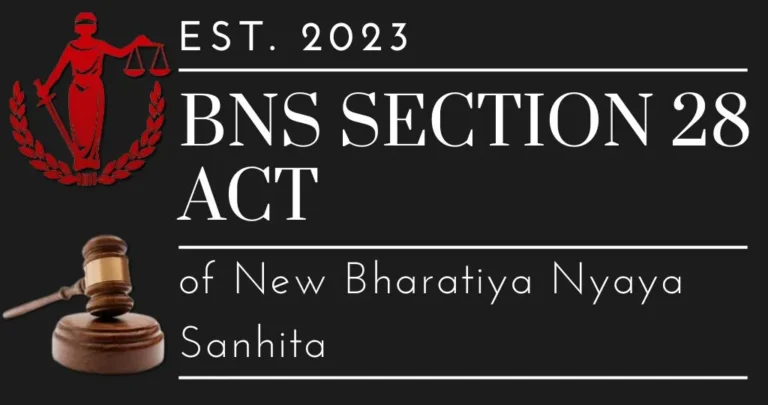
Understanding Section 247 of the Bharatiya Nagarik Suraksha Sanhita, 2023: Concluding Insights on the Law of Charges
Interpretation of Section 247 of the Bharatiya Nagarik Suraksha Sanhita, 2023: Final Views on the Law of Charges
Introduction to Section 247 and Its Importance
Section 247, the final section of Chapter on charges under the Bharatiya Nagarik Suraksha Sanhita (BNSS), 2023, is concerned with scenarios where several charges have been incurred against an individual. This section makes provision for withdrawing or suspending some of these charges under specified circumstances, particularly after conviction on one or more charges. When a charge is withdrawn under this section, it counts as an acquittal, except where the later setting aside of the conviction entails that the inquiry or trial for the withdrawn charges may be resumed. This is a means to facilitate the judicial process by not wasting trials on other charges once a conviction is made, thus saving judicial resources.
For More Updates & Regular Notes Join Our Whats App Group (https://chat.whatsapp.com/DkucckgAEJbCtXwXr2yIt0) and Telegram Group ( https://t.me/legalmaestroeducators ) contact@legalmaestros.com.
As this section concludes the series of provisions on charges, understanding it fully requires examining its context within the broader framework of earlier sections in the same chapter. We’ll revisit these sections to understand how they collectively shape the legal framework surrounding charges, providing a streamlined, efficient, and fair judicial process.
For More Updates & Regular Notes Join Our Whats App Group (https://chat.whatsapp.com/DkucckgAEJbCtXwXr2yIt0) and Telegram Group ( https://t.me/legalmaestroeducators )
Revisiting Earlier Sections on Charges in the BNSS
The previous portions of the chapter on charges set out essential principles that govern the framing, alteration, condensation, and trial of charges. These portions, from Section 239 to Section 246, cover several aspects of charging an individual with an offense and thereby providing a just and consistent procedure. Let’s briefly go over each of these sections to grasp the whole framework in its entirety.
Section 239 – Essentials of Framing a Charge
Section 239 is a core section, and it gives a general idea of when and how a charge can be worded against an individual accused of an offense. The main aim of this section is to make sure that a charge is well defined and clearly worded so that the accused knows the nature of the charges. This section emphasizes that clarity and precision in the charge are required for a just trial.
This early part of the chapter establishes the tone for the rest of it by highlighting the accuracy of charges and laying down a clear platform for how the accused can retaliate. When charges are accurate and properly worded, it avoids confusion, making the accused aware and capable of properly preparing defense.
Section 240 – Details of the Charge
Section 240 is followed by stipulating the conditions of detailing the charge. It requires that charges are to be set out in a clear way, stating the specific offense and also facts relevant thereto so as to make it clear. For example, if a person is charged with theft, the facts should not only state the theft but also where, when, and under what circumstances it is said to have been committed.
This section is intended to provide transparency, enabling the accused to clearly know the nature of the charges. Proper detailing benefits the court by creating a clearly defined framework for the trial or inquiry and minimizing the chances of procedural flaws.
Section 241 – Amendment of Charges
The BNSS also identifies the requirement for flexibility in charging. Section 241 gives the court power to alter charges in the course of a trial where new facts or evidence come up. The court is, however, required to notify the accused of such alterations so that they can reply or adjust their defense accordingly. This ensures that justice is not sacrificed by sticking to an original charge and is able to adjust to new information.
The amendment provision balances fairness and efficiency, allowing the court to correct or adjust charges without restarting the entire trial. It reflects the law’s adaptability and its goal of rendering fair judgments even when circumstances shift.
Section 242 – Joinder of Charges for the Same Offense or Series of Offenses
Section 242 allows several charges against an accused to be combined and tried conjointly when they relate to similar offenses or to a continuing course of acts within a twelve-month period. This is for the purpose of avoiding several related offenses from requiring separate trials and thereby sparing both the court and the accused alike from undue expenditure of time and resources. This simplifies the trial process while making sure all facets of the alleged evil are dealt with jointly.
This section therefore becomes an important provision of efficiency to the effect that related charges are handled at one trial. It allows for a holistic examination of the conduct of the accused while saving judicial time.
Section 243 – Multiple Charges for Offenses from the Same Series of Acts
Section 243 extends the idea of joinder to charging for a set of acts that constitute separate offenses but together make a series of criminal activity. For example, if a person commits robbery and at the same time commits assault, the person can be charged with both crimes under a single trial. The section adds that an individual can be tried both for the combined offense and each offense.
This provision ensures that the legal process is neither lenient nor excessive by providing for the option of prosecuting all such acts collectively or separately, as the case may be.
Section 244 – Alternative Charges for Similar Offenses
Section 244 permits alternative charges in case there is uncertainty about which particular offense to apply for the acts committed. If someone is charged with theft, receiving stolen goods, or breach of trust on identical facts, these charges can be taken into account as alternatives at trial. The court can thereby hold the accused guilty of any offense established without necessitating separate trials.
This section is particularly helpful in the situation of concurrent criminal offenses, making it easier and minimizing the chances of wrongful acquittals on technical grounds of differences between offenses.
Section 245 – Conviction for Lesser Offense When Indicted for Higher Offense
Section 245 deals with the case when a person is charged with a serious offense but only a minor offense is proven from the evidence. For example, if a person is accused of grievous assault but it is established only as simple assault from the evidence, he or she can be convicted of the lesser offense without separate charges. It gives room to the court to pass a just verdict according to the available evidence instead of procedural technicalities.
It demonstrates the system’s practical approach to achieving justice, providing a way to issue appropriate convictions even if the initial charge is more severe.
Section 246 – Joint Trials of Co-accused
Section 246 allows the concurrent trial of different individuals charged with various crimes that form part of a single criminal transaction. If more than one individual is involved in a series of connected criminal acts, they can be tried simultaneously to give a comprehensive picture of the event and apportion blame. This facilitates an integrated analysis of the situation, enabling the court to consider all the details of the suspected crime in a single trial.
In-Depth Analysis of Section 247: Withdrawal or Suspension of Charges Upon Conviction
Section 247 provides an independent provision, dealing with situations where several charges are initially put up against an accused person, but conviction has been recorded on one or more charges. It allows the complainant officer or prosecuting officer, with the leave of the court, to withdraw any pending charges. Alternatively, the court may decide to stay or suspend these charges on its own.
If these outstanding charges are withdrawn, the accused is acquitted on them. But if the conviction on the initial charges is subsequently quashed on appeal or otherwise ordered to be set aside, the court may order the withdrawn charges to be reopened for trial.
1. Role of the Court in Charge Withdrawal
Power under Section 247 is an appreciation of the relevance of judicial discretion. Courts can determine whether prosecution on pending charges is necessary once a conviction is secured. It is up to the court to consider whether supplemental charges are to the furtherance of the administration of justice or whether they add unnecessary delay in the trial.
2. Requirement of Consent for Withdrawal by the Prosecution
If charges are to be withdrawn by the prosecution, consent from the court must be sought, allowing for accountability and discouraging arbitrary withdrawal. This control ensures that charges are withdrawn only in instances when pursuing further prosecution would be without merit or redundant.
3. Acquittal Effect of Withdrawal
Once charges are withdrawn under Section 247, the accused is acquitted of those charges unless the original conviction is ordered to be set aside. Such acquittal is binding on law, safeguarding the accused against retrial on those charges, which is in accordance with the principles of finality and legal certainty.
4. Reopening of Withdrawn Charges
Where the conviction is overturned, Section 247 provides for a re-hearing of charges previously withdrawn. This ensures that there is no miscarriage of justice, and acquittal on the charges is only irreversible if the original conviction is upheld. In case new facts arise as a result of the reversal, the court can reopen the withdrawn charges and start appropriate proceedings.
Conclusion: Integrated Scheme for Handling Charges
The BNSS chapter on charges, ending with Section 247, presents a comprehensive legal regime for dealing with criminal charges in a balanced and effective way. Every section draws on the previous one, laying down firm guidelines on charging, changing, consolidating, and dealing with charges, and ending with the last provision for charging withdrawal. Section 247 is a closing device that protects judicial efficiency while ensuring justice, permitting charge withdrawal upon attainment of convictions on central offenses, with protection against possible reversals.
Together, these sections provide an integrated approach towards dealing with criminal charges, guaranteeing fair trials, comprehensive scrutiny, and appreciation of the nuance in criminal behavior. The charges chapter of the BNSS reflects a synergy of flexibility, specificity, and accountability necessary for a fair and equitable criminal justice process in India.






